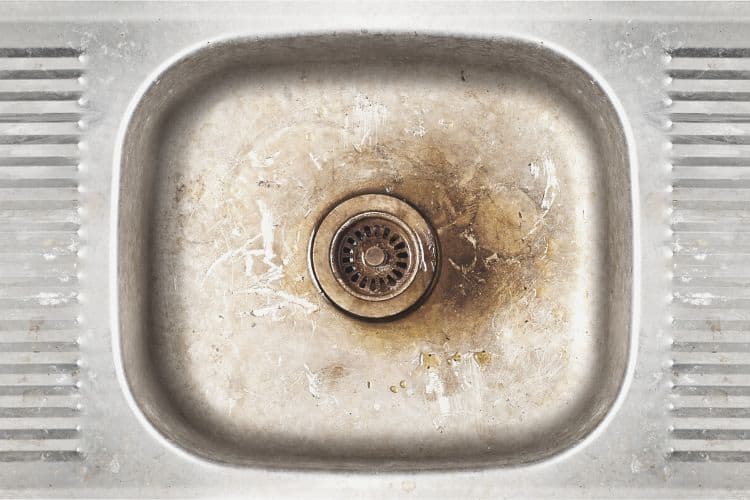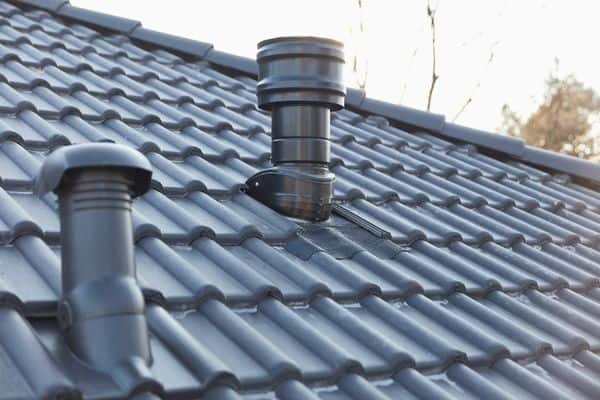Is Your Plumbing Vent Pipe Clogged?

Are you tired of your toilet gurgling and your kitchen sink draining slower than a snail on a lazy Sunday? Well, before you rip out your plumbing and call it quits, have you considered that a clogged plumbing vent could be the culprit?
In this article, we’ll go over the top symptoms of a clogged vent pipe and provide tips on how to clear it. You’ll be able to say goodbye to gurgling toilets and hello to a healthy plumbing system in no time!
Contents
Clogged Plumbing Vent: Key Takeaways
- Your vent system helps prevent hazardous sewer gasses from collecting in your home and keeps water pressure at an optimal level.
- Symptoms of a blockage in your air vent include gurgling noises, strong sewage smells, a sluggish, slow drain, and dry and empty toilet tanks.
- To prevent blockages in your vent stack and keep it functioning optimally, make sure to regularly clear out debris, keep away any pests, and ensure your vent pipes are sized correctly.
- To prevent significant damage to your home, always address any issues you may have with your plumbing vents promptly.
- Regular inspections and maintenance are key to keeping your drainage system working properly.
- This issue can sometimes be resolved with a few simple tools (a drain auger and garden hose). In other cases, you’ll need to call in a professional.
How to Tell If You Have a Clogged Vent Pipe?
At first, the signs of a blockage may seem minor and easy to ignore. However, if you’re experiencing any of the following issues, don’t wait – action needs to be taken before the symptoms worsen.
Symptom #1: Gurgling Toilets and Drains

A bubbling or gurgling sound coming from your toilet or sink is a common indication of a blocked plumbing pipe. This is because air is unable to escape through the roof vent and instead has to escape by rising through the water in your bathroom or kitchen p-trap.
Symptom #2: Strong Sewage Smells

If there’s a strong stench of sewage coming from your drains, it could be due to sewer gas building up in your home due to a clogged vent pipe.
Sewer gasses from your main sewer line are definitely something that you shouldn’t ignore as they can be harmful to your health. These gasses can contain methane, carbon monoxide or hydrogen sulfate, which can cause poisoning if the problem is left untreated.
Symptom #3: Sluggish Drains

If a roof vent is blocked, water can struggle to properly drain from your bathroom or kitchen fixtures. This can then cause slow-running sinks, showers, and tubs. Removing the pipe blockage by hand or with an augur should get the water flowing again.
Symptom #4: Dry and Empty Toilet Tanks

Clogged plumbing vents can cause water to be siphoned out of your toilet’s tank, resulting in a dry and empty tank.
What Is a Plumbing Vent & Why It’s Integral to Your Plumbing System
The vent pipe is a critical yet commonly overlooked part of the drain system in your home. It is a vertical pipe that connects your plumbing pipes to a vent on the roof, thus, enabling air to move through the drain line. This allows water and waste to freely flow into your septic system while also preventing hazardous sewer gases from entering your living space.
A roof vent helps maintain the ideal pressure in your pipes. When water flows through a drain pipe, it produces negative air pressure which draws fresh air into your drain pipes.
However, if your plumbing vent is clogged, then it will pull air in from other sources such as your toilet bowl or sink p-traps. This often leads to them drying out and foul sewer odors entering your home.
On the flip side, a roof vent helps prevent clogs and keeps things flowing properly through the pipes. If a vent becomes clogged, it can cause water to back up in your plumbing fixtures and lead to slow-draining sinks, tubs, and showers.

Causes & How To Keep Your Vent Pipes Problem-Free
Many causes of a blockage in your roof stack are easily avoidable. Below are some of the most common and how to prevent them.
Clear Debris
Keeping your roof and ventilation stack clear of debris is the surest way to keep your water flow working at peak efficiency.
Keep Out Vermin
Small critters like birds and squirrels may build nests in your plumbing vent and cause obstructions. To avoid this, consider fitting a cap or screen over it to deter any unwanted visitors.
Avoid Flushing Non-Flushable Items
Flushing non-flushable items, such as wipes or feminine products, down the toilet can lead to a blocked drain line, leading to issues in the vent pipe.
If you have a clogged drain on your hands, a plumbing snake is the method most likely to remove the blockage and allow your drain pipe to flow freely again.
Improper Vent Cap Installation
Improper installation of the vent cap can lead to blockages.
Vent Pipe Too Small
If your vent pipe is too small for your plumbing line to work correctly, then there will not be enough fresh air supply to allow the sewer line to flush waste away easily.
If you still end up with a clogged vent pipe despite taking the above precautions, you can either choose to tackle the issue yourself or contact a professional plumber who will have the knowledge and tools to solve the problem.
Wrapping Up: Toilet Vent Pipe Plumbing Problems
Clogged vent pipes can be a major problem for homeowners. If left unchecked, they can cause water to back up in your drainage pipes, leading to unpleasant odors and wastewater backflow, amongst other issues.
Fortunately, there are several signs that indicate when a pipe is clogged and steps you can take to unclog it. Pay attention to foul sewage smells, slow-draining sinks or tubs, and gurgling noises coming from your drains.
If you suspect a clogged plumbing vent pipe, contact a local plumber who can help diagnose and fix the issue. With proper maintenance and care, you can avoid costly repairs in the future.
If you have any further comments or questions about this topic, please let us know in the comments below.

